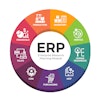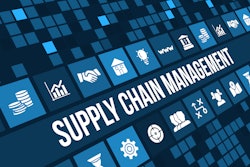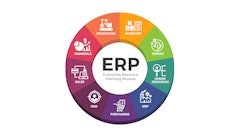
Every dollar counts for small businesses. And while this has almost always been the case for many entrepreneurs, the margins today are especially tight. The cost of raw materials, shipping services and labor has been steadily rising for years, and new tariffs are adding costs for businesses and consumers. In fact, a recent Consumer Price Index report showed that inflation continued to rise in June 2025, and Goldman Sachs forecasted continued tariff-induced increases on electronics, autos and apparel.
At the same time, technology is becoming more capable. Digital solutions are proving to be essential for connectivity, and next-generation technologies like artificial intelligence (AI) and machine learning (ML) are offering intelligent, data-driven solutions for longstanding challenges. Take procurement, for example. Once seen as a routine task that keeps inventory in stock, tech-driven solutions for procurement can help business owners anticipate demand, mitigate risks and spot opportunities before the competition catches on. In fact, a 2025 Deloitte report found that procurement functions are ripe to reap the benefits of the digital and next-gen technology boom. Businesses that adopted smart procurement saw a 16% increase in cost savings and a 22% increase in supplier performance.
For small and medium-sized businesses (SMBs), the percent change can be the difference in payroll or cutting staff. Business owners need to turn to technology to help them make informed decisions that will shape their overall operations and cement a fruitful future.
The shift toward procurement intelligence
Implementing a procurement strategy that uses real-time data can be a powerful tool for SMBs. Instead of reacting to fluctuating commodity prices or supply chain disruptions, businesses can proactively make changes, such as diversifying suppliers or exploring alternative materials, that help ensure their business won’t take a major hit if there are global events that cause sudden macroeconomic changes. It allows for a holistic view of business operations – from market trends to supplier shifts to policy changes. With this data, business owners can make smarter business decisions that help them protect profit margins and set them up for scalable growth.
Big Box retailers often have entire teams dedicated to procurement and much more buying power than smaller companies. But, today, there’s technology that’s tailor-made for SMBs that can give them the same access to procurement intelligence as their larger competitors. Cloud-based inventory management software, with integrated analytical tools and opportunities to connect to the most used operational applications, can level the playing field. These tools can help business owners streamline the purchasing process, minimize errors and improve overall efficiency in their supply chain. The agility and foresight that SMBs gain from using these connected tools are invaluable.
The benefits of robust procurement management
Once SMBs begin to utilize a connected system to manage their business, many should start to see an immediate return on investment (ROI) from streamlining operations. When it comes to the procurement workflow, an integrated system can simplify all aspects. For example, when creating a purchase order (PO), users can quickly add products, variants and manage bulk purchases. When it comes to receiving a PO, tracking the delivery status and updating inventory once the order is received can be done in real time, which ensures that inventory levels remain accurate at all times. Having a central source of truth for procurement and inventory management, including all supplier information and cost details, offers the oversight needed for efficient business operations.
Procurement intelligence allows SMBs to stay ahead of any potential inventory issues by tracking stock and future stock, as well as forecasting demand. The ability to predict inventory needs based on real-time sales, procurement and production data helps SMBs avoid stockouts, reduce excess stock and plan smarter.
Implementing a new procurement workflow
Streamlining business operations has long been a cost-saving strategy for many small businesses. But oftentimes, getting started is one of the biggest hurdles. As a first step, audit your current procurement process and identify any gaps or inefficiencies. If you are making the move from pen and paper to cloud-based operations, explore tools that offer solutions specifically for SMBs. There are many software options available for enterprise businesses, but they’ll often include features and benefits that SMBs have no use for in their day-to-day lives. Software solutions should help you simplify your business with all aspects that you need – from shop floor to accounting – and enable you to scale when you’re ready.
Effectively communicating any change management practice to your team is essential, as is making sure they have the resources they need to effectively use the new system. It’s worthwhile finding a software provider that offers comprehensive onboarding support to equip your team with the skills they need for everyday tasks and to gather data for smarter decision making. Effective onboarding can directly impact your bottom line, saving both time and money.
With the technology available today, businesses of any size can implement procurement intelligence. And with the continued market uncertainty, there’s an urgent need to look for opportunities that can help you get better visibility before the next crisis hits your supply chain. Embracing procurement intelligence can help SMBs build a more resilient, profitable business. Find the tools that are the best fit for your business, collect and analyze the data that matters the most to you, and reap the benefits.













